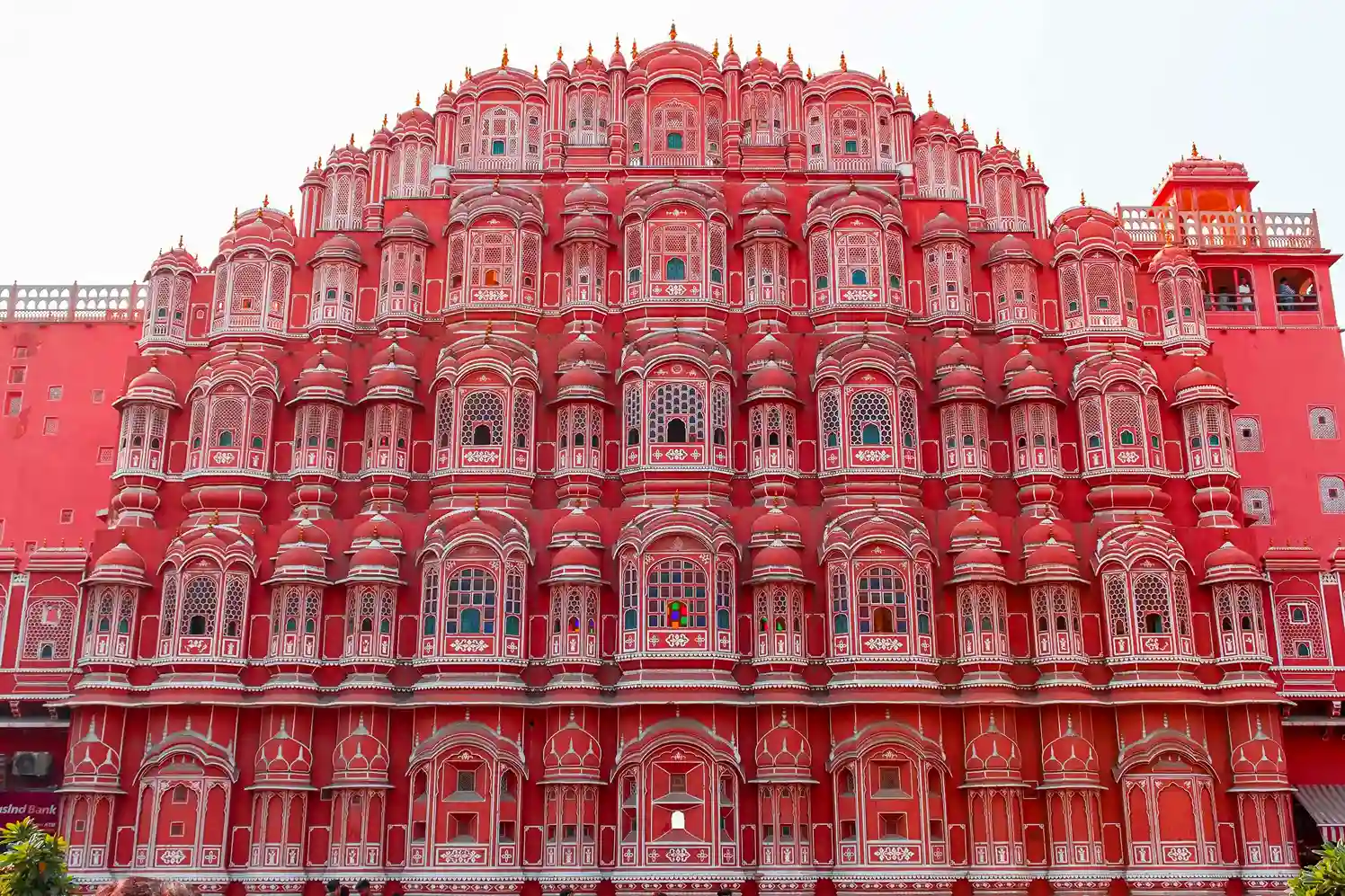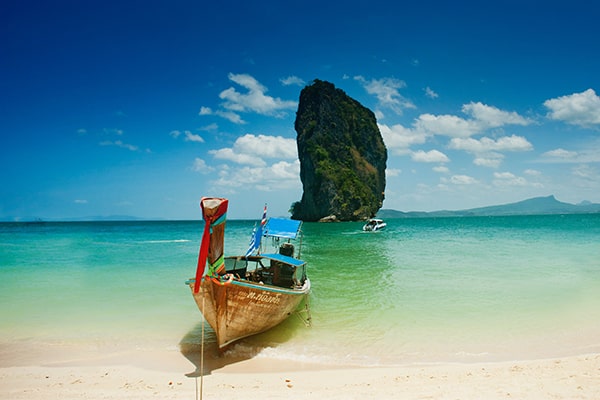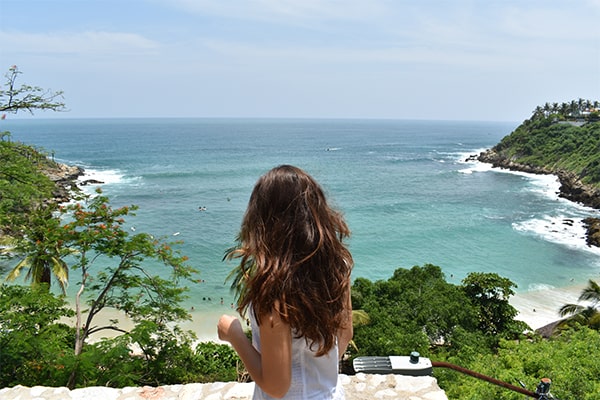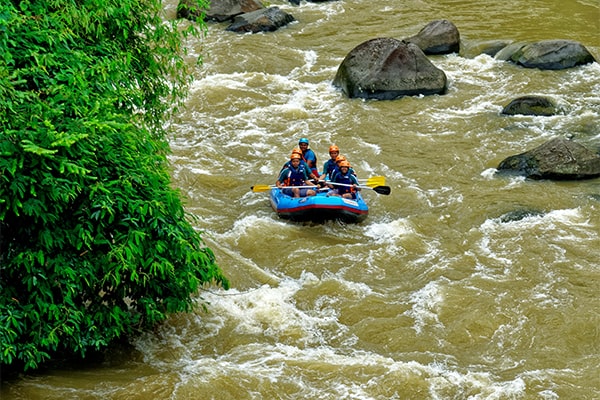




Golden Triangle With Varanasi & Kathmandu
10N / 11D Transfer Hotels Sightseeing
Meals
Visit India and trace the famous Golden Triangle tour with Varanasi & Kathmandu. Enjoy the perfect introduction to India's three most popular destinations - Delhi, Agra and Jaipur - as we explore the icons and discover the secrets of this fascinating country. Experience the history of massive forts, the opulence and splendour of Rajasthan's palaces, the bustle and buzz of markets and bazaars, and the traditions of a heritage stay. Travel through a land full of contrasts on this compact India tour, jam-packed with unforgettable highlights.
- Explore the pulsating city of New Delhi
- Cycle Rickshaw ride in Old Delhi to explore narrow lane and spice market.
- Visit of Magnificent Taj Mahal – The monument of Love
- Visit to holy shrine of Fathepur Sikri and Salim Chisti's Tomb
- Ride up to Amber Fort on a caparisoned, by elephant.
- Visit the three Queen cities in the Kathmandu Valley
- Guided walk through two ancient Bazaars
- The ancient royal city of Kathmandu’s historic squares lined with temples and other beautifully intricate examples of Nepalese architecture
- The Kathmandu’s other ancient royal cities – Patan and Bhaktapur – make a perfect day trip.
- Stunning Himalayan vistas of sunrise and sunset views of the Himalayas
- Accommodation for total 10 nights .
- Meals as per preferance ( Breakfast is always inclusive)
- Transfers, sightseeing, and excursions as per the program by air-conditioned Vehicle
- English-speaking/ Any other Language speaking local guide/accompanying Guide for sightseeing as per the program.
- All entrance fees to the monuments as mentioned in the program.
- Elephant ride at Amber Fort, Jaipur while ascending to the hill and Jeep ride while descending from the hill.
- Cycle rickshaw ride in the local bazaar (Market ) in Delhi & Jaipur and Varanasi.
- Jeep Ride while descending from Amer Fort to downhill.
- All transfers between airport/hotel/airport in each city, where applicable.
- All land transfers between cities in an air-conditioned vehicle.
- Our representative for assistance on arrival and departure at the airport.
- All monuments in Nepal as per itinerary.
- Two bottles of mineral water each day during sightseeing
- All presently applicable taxes including the GST charges levied recently by the Government.
- International Fare or Visa Fee etc.
- All the personal expenses as tip, laundry, beverages and bar bill etc.
- Baggage and personal expenses.
- Any other expenses due to political, act of nature or any other reason which are beyond control of our or its associate agents.
- Any other meals /things unless specified in inclusions.
- Things not specified in inclusions.
Day 1
Arrival Delhi
Upon arrival at Delhi airport and after your immigration clearance and baggage collection and afterwards while coming out of Airport Exit Gate 05 , you will be met and greeted there by our office representative and will be transferred to your hotel.
Hotel standard check in time : 1400 Hrs.
Delhi: is one of the oldest continually inhabited cities in the world. Having been the capital of several empires in ancient India, Delhi was a major city in the old trade routes from northwest India to the Gangetic Plains. As the seat of the Government of India, New Delhi houses important offices of the federal government, including the Parliament of India. Check in at hotel and rest of the day is free for relaxation cum your own activities.
Overnight at the hotel.
Day 2
Delhi Sightseeing
After breakfast, proceed for a full-day private tour, with a guide in English (or language of your choice) speaking. Visit fascinating Old Delhi for a cultural immersion in this beautiful historic city. Drive past Red Fort and Jama Masjid: The Red Fort (Lal Qila) is one of Delhi's top tourist sights. A brilliant red sandstone fort built by the Mughal Emperor Shah Jahan (who also built Agra's Taj Mahal) as his ruling palace. Enjoy Rickshaw ride, passing through the Chandni Chowk market (where craftsmen sell their wares) and through the narrow streets of old Delhi where you will come across the fusion of current traditions and heritage that were built there. The ride terminates at Jama Masjid mosque which is one of Asia’s largest mosques with its marble domes and splendor minarets. Continue to Raj Ghat (where Gandhiji was cremated). Continue your visit to main temple of Sikhism in Delhi: Gurdwara Bangla Sahib, which was originally a palace and has a peculiar golden dome. During the temple visit, the opportunity to participate in food preparation (subject to time availability) in the communal kitchen run by Gurdwara Committee. Afternoon, continue with tour of New Delhi, which reflects the legacy the British left behind. The division between New and Old Delhi is the division between the capitals of the British and the Mughals respectively. The division in the walled city and New Delhi also marks the division in the lifestyles. The walled city is all tradition where one will be able to glean a past lifestyle in all its facets colours and spells. New Delhi in contrast, is a city trying to live up to the best of 21st century standards. Drive past India Gate, Government buildings.
visit Qutub Minar.
Qutub Minar : also spelled Qutub Minar or Qutab Minar is the tallest brick minaret in the world and an important example of Indo-Islamic Architecture. The Qutub Minar and its monuments are listed as a UNESCO World Heritage Site.
Day 3
Delhi to Jaipur by Surface (250 Kms/05 Hrs)
After breakfast drive to Jaipur.
Jaipur: is the capital and largest city of the Indian state of Rajasthan in Northern India. It was founded on 18 November 1727 by Maharaja Sawai Jai Singh II, the ruler of Amber, after whom the city is named. Jaipur is known as the Pink City of India and well known for its beautiful carpets, enamelled ornaments, precious and semi-precious stones, brass ornaments and many other arts and crafts”.
Visit Galta ji Temple (Monkey Temple) - Galta Ji Temple, often called the Monkey Temple, is a historic Hindu pilgrimage site nestled in the Aravalli Hills near Jaipur, Rajasthan. This ancient temple complex is built around a natural freshwater spring and features a series of sacred kunds (water tanks), pavilions, and shrines dedicated primarily to Lord Hanuman, Lord Ram, and Sun God Surya. Evening visit to famous The Laxmi Narayan Temple is commonly known as the Birla Temple. There is a magnificent museum which exhibits the ancestral possessions of the Birla family.
Overnight at the Hotel.
Day 4
Jaipur Sightseeing
After breakfast proceed for the sightseeing tour of Jaipur visiting Amer Fort with Elephant Ride. Enroute to Amer Fort , brief stop at Palace on winds (Hawa Mahal) to have photo shoot and glimpses of this Wind Palace. Amer Fort is approximate 10 Kms from Jaipur and is the ancient capital of Jaipur. Fort palace was constructed in 1652 by King Mansingh and later extended and completed by King Jai Singh. Erected on a vast hill, the citadel and its fort were intended to protect the ancient capital of the state of Jaipur. You will get there on the back of an elephant. Explore the majestic Amer Fort. You will be able to visit the various rooms, the inner courtyards, the rooms of public hearings, the Mughal gardens with its star-shaped flower beds. In addition, Amber Fort offers panoramic views of Lake Maota. After your visit, return down the hill through Jeep. Take out some time to do shopping of Handicrafts before proceeding further to City Palace, if interested to carry some souvenirs from this city.
City Palace is one of the major landmarks in Jaipur. The beautiful palace was built by Maharaja Sawai Jai Singh during his reign. Among the various forts and palaces of Jaipur, City Palace stands apart, with its outstanding art and architecture. In the Palace complex visit Maharaja Sawai Man Singh II Museum. Visit to Observatory or Jantar Mantar. It is an astronomical observation site built in the early 18th century. Whose passion for science, engineering, and astronomy prompted him to construct this complex of fourteen scientific instruments. It’s been over 200 years since they were first constructed, these fourteen structures can still accurately measure time; predict eclipses, and track stars and planets in their orbits. Apart, Handicrafts, Jaipur is also famous for stones and Gems. If interested, one may visit to one of the Handicraft stores for local handicrafts or hand-woven carpets or stone and Gems place to buy or shop around.
Later, proceed for Dinner at one of the old heritage palaces to see the cultural dance performance.
Overnight at the Hotel.
Day 5
Jaipur to Agra by Surface (250 Kms/05 Hrs)
After breakfast in morning, drive to Agra.
Agra : Situated on the bank of River Yamuna, the city is famous for being the capital of the Mughal emperors from 1526 to 1658. It is a major tourist destination for its many Mughal-era buildings such as TAJ Mahal, Agra Fort and Fatehpur Sikri, all three of which are UNESCO World Heritage Sites. Today visit the incredible Taj Mahal by sunrise (UNESCO), a white marble mausoleum built by the Mughal emperor Shah Jahan for his Empress Mumtaz. The construction of this monument of love is believed to have taken 22 years to complete with over 20,000 craftsmen working round the clock. The white marble was quarried 200 miles away and was transported to the site by a fleet of 1000 elephants. It is also termed as monument of love and
remains closed on every Friday.
And the mythical Red Fort of Agra (UNESCO), symbol of the power and artistic influence of the Mughal dynasty standing on the banks of the Yamuna, a tributary of the Ganges. The Agra Fort is one of the most important and robustly built strongholds of the Mughals, built at the bank of River Yamuna, is situated in the center of the town. Various styles of the architecture are evident within the fort and demonstrate the love of Mughal Emperors towards building beautiful monuments. It is the seat and the stronghold of the Mughal Empire under successive generations. Agra is known for its fabulous marble and soft stone inlay work. The Mughals were great patrons of Arts and Crafts.
Overnight at the hotel.
Day 6
Agra to Varanasi by Train (20176)
Early breakfast, in time proceed to Agra railway station to connect Vandey Bharat Train (20176) Agra Departure 0600 Hrs à Arrival Varanasi 1300 Hrs. Upon arrival in Varanasi, check in at hotel. Lunch at your own. Later early evening explores the city walking and enjoy a rickshaw ride and then deboard from Rickshaw and witnesses the religious ceremony on the Hindu holiest river – The Ganges. Participate in the Holi prayer, which is quite interesting. After visit return to hotel.
Train Details :- Vande Bharat Express (20176)
Departure Agra :- 0600 Hrs
Arrival Varanasi :- 1300 Hrs
Note :- Vandey Bharat not run on Wednesday
Overnight at the hotel.
Day 7
Varanasi Sightseeing
Early morning at 0500 Hrs: Proceed to experience Boat Ride on holy River Ganges. While you return from Boat ride, enroute to hotel may visit Bharat Mata temple, Durga temple and the Tulsi Manas Temple and Benares Hindu University. Breakfast at hotel. After Breakfast proceed for an excursion to Sarnath, one of the top four Buddhist pilgrimage destinations in the world where the Buddha gave his first sermon. Buddhists look upon India as the land of Buddha which makes Sarnath a popular tourist attraction. Visit the Archaeological Museum (Closed on Friday’s), Ashoka Pillar and the Chinese Buddhist Temple. Lunch at your own. Afternoon, return to Varanasi. Time free for shopping and visiting various Ghats. Varanasi is famous for Silk. You can find world class quality silk. After shopping, time free for relaxation.
Overnight at the hotel.
Day 8
Varanasi - Delhi - Kathmandu by Flight
Breakfast at Hotel.
Today, transfer to airport to board flight for Delhi. Upon arrival you will connect flight to Kathmandu. Upon arrival in Kathmandu, meet our representative and transfer to hotel. Upon arrival Check in at hotel. Transfer to hotel (Normal check in time of hotel is 1400 hours)
Overnight at the Hotel.
Day 9
Kathmandu Sightseeing
Breakfast at hotel
Early Morning Full day sightseeing tour of Kathmandu Durbar Square, Swayambunath.
Kathmandu Durbar Square - known as Kantipur, the capital of the Kingdom of Nepal. Here you will visit the temple of the Living Goddess, who acknowledges the greetings of the devotees from the balcony of her temple residence. Kasthamandap - the source of the name Kathmandu and supposed to be made from the timber of a single tree and the Durbar Square are with its array of temples overlooked by the Hanuman Dhoka Palace, the ancient place of the Nepalese Royalty.
Swayambunath - located approximately 4 km/2.5 miles, Buddhist stupa this is said to be 2000 years old. The stupa which forms the main structure is composed of a solid hemisphere of brick and earth supporting a lofty conical spire capped by a pinnacle of copper gilt. Painted on the four-sided base of the spire are the all-seeing eyes of Buddha. This hill is a mosaic of small Chaityas and Pagoda temples.
Patan City - 5 km/3 miles away from Kathmandu City. Patan also known as Lalitpur, is the city of fine arts, enclosed within 4 stupas said to be built in 3rd century AD, by Emperor Ashoka. You will see the Durbar square, the Patan Durbar which houses a bronze collection, and the Krishna Temple built by King Siddhi Narsingh Malla.
Overnight at the Hotel.
Day 10
Kathmandu Sightseeing
Breakfast at hotel
Full-day sightseeing tour of Pashupatinath, Boudhanath & Bhaktapur Durbar Square
Pashupatinath - situated 5 km east of Kathmandu city, Pashupatinath temple is one of the holiest Hindu temples dedicated to Lord Shiva. Situated amidst a lush green natural setting on the bank of the sacred Bagmati river, the temple built in pagoda style has a gilted roof and richly carved silver doors. Visitors will be permitted to view the temple from the east bank of River Bagmati, entrance to the temple being strictly forbidden to all non-Hindus. Pashupatinath is the center of the annual pilgrimage on the day of Shivaratri which falls in February/March. Behind the temples are the cremation grounds
Bodhnath - this stupa, eight kilometers east of Kathmandu City is one of the biggest in the world of its kind. It stands with four pairs of eyes in the four cardinal directions keeping watch for righteous behaviors and human prosperity. This Buddhist stupa was built by King Man Deva at the advice of Goddess Mani Jogini. It is built on an octagonal base inset with prayer wheels. The shrine is ringed by houses of Lamas or Buddhist priests.
Bhadgaon - also known as Bhaktapur meaning the city of devotees, this place is the home of medieval art and architecture. Lying 14 km/9 miles east of Kathmandu City, this place was founded in the 9th century and is shaped like a conch shell. The city is at the height of 4600 ft. above sea level. In Bhadgaon you will visit the Durbar Square with its array of temples overlooked by the Palace of 55 windows built by King Bhupatindra Malla. The Nyatapola Temple also built by King Bhupatindra Malla, is the best example of Pagoda style and stands of five terraces on each of which stands a pair of figures two famous strong men, two elephants, two lions, two famous strong men, two elephants, two lions, two griffins and two goddesses.
Overnight at the Hotel.
Day 11
Kathmandu to Delhi & International Departure
Breakfast at the hotel.
After breakfast, check out from the hotel and transfer to the International Airport to connect the flight to the onward destination.
Request Price
Fill in your details and we’ll get back to you with the best travel options.


